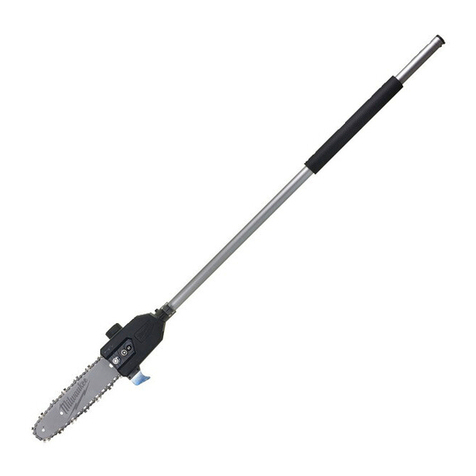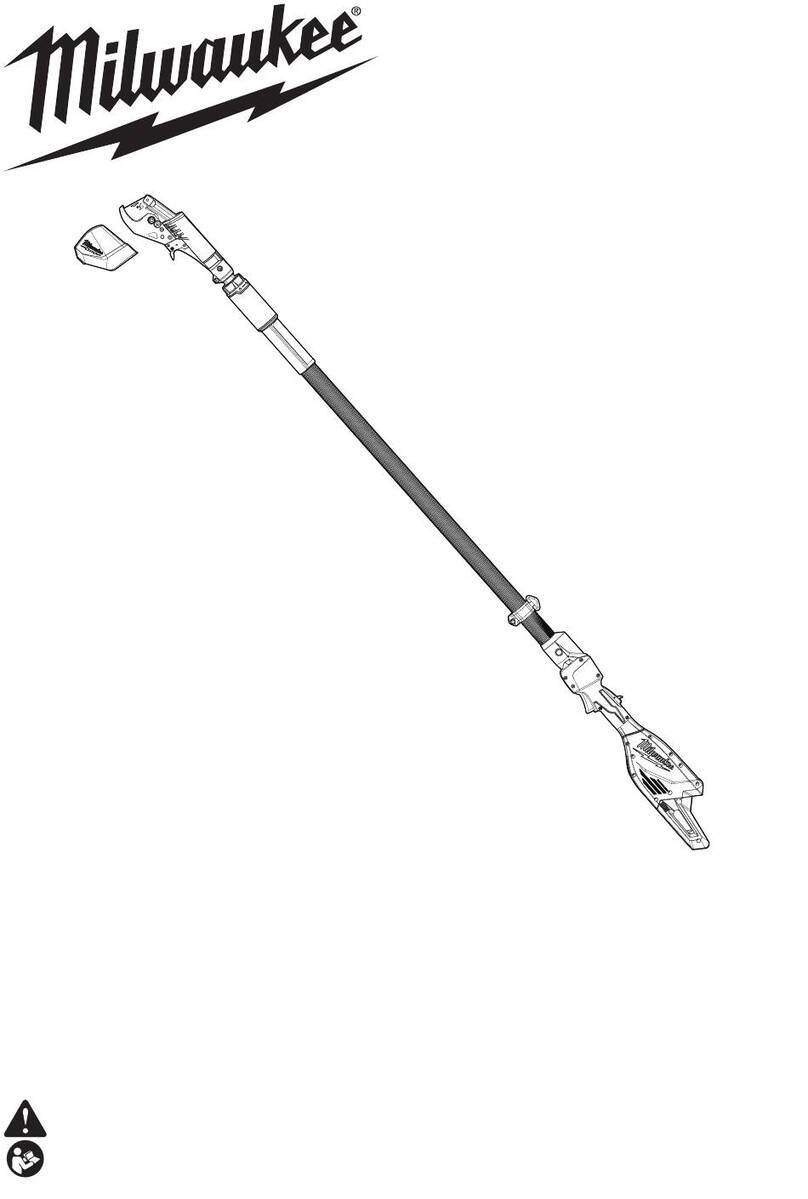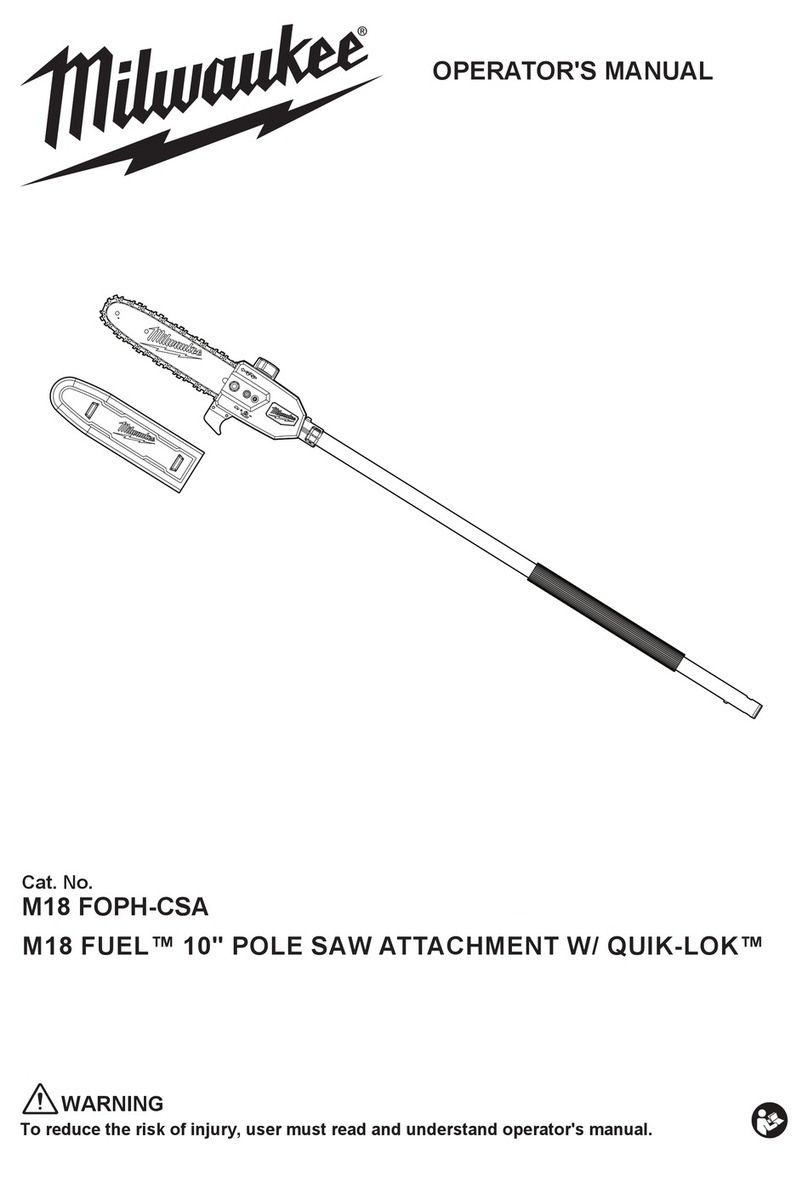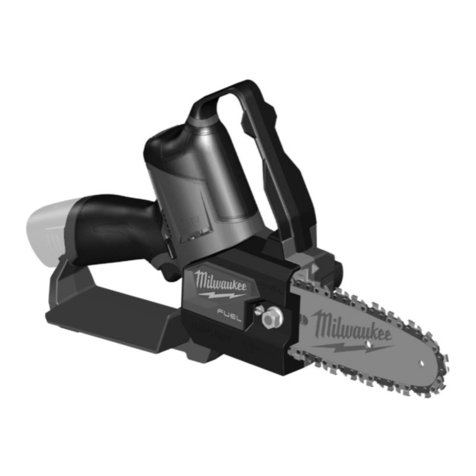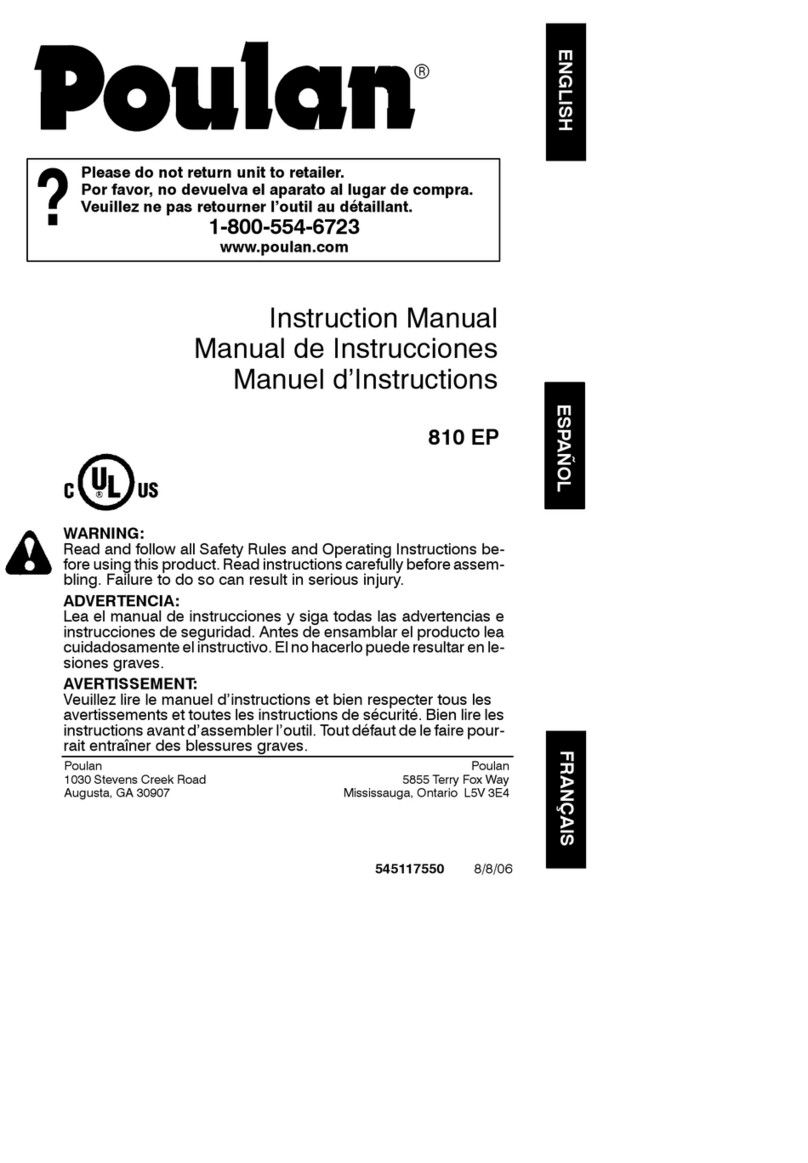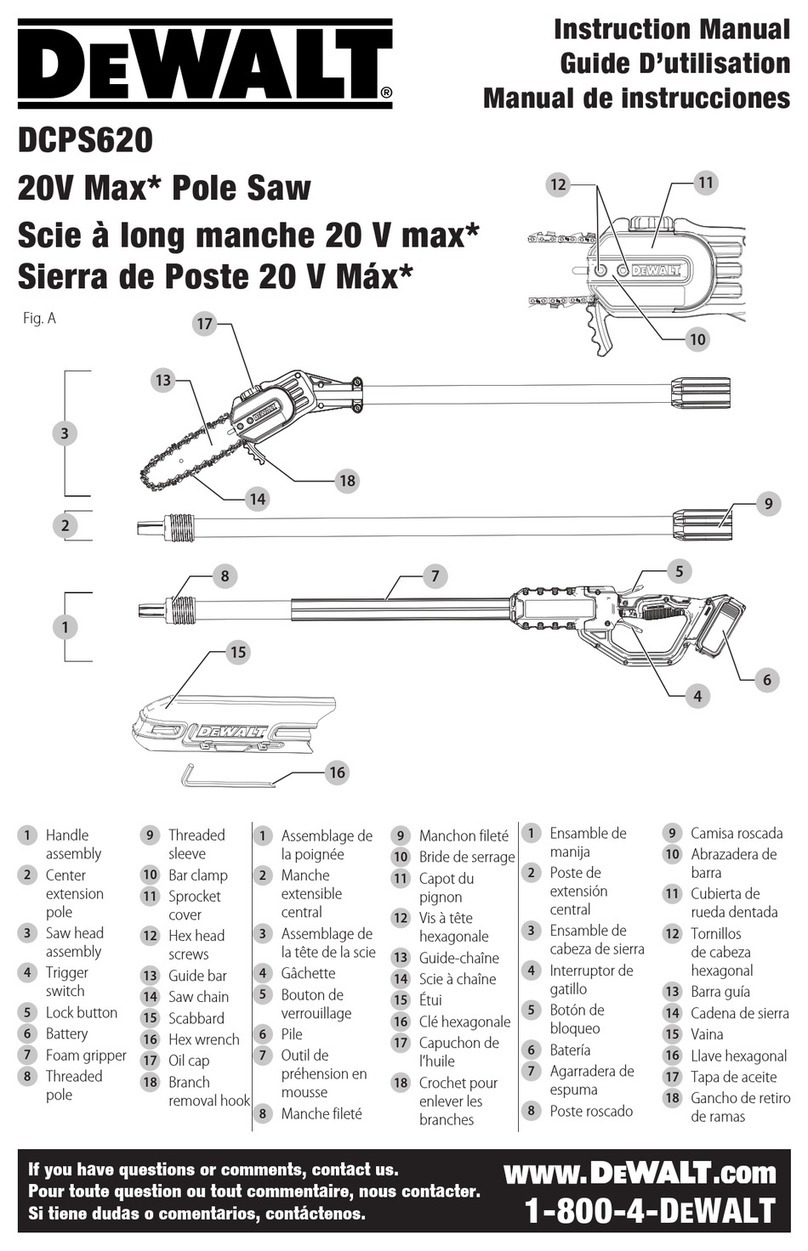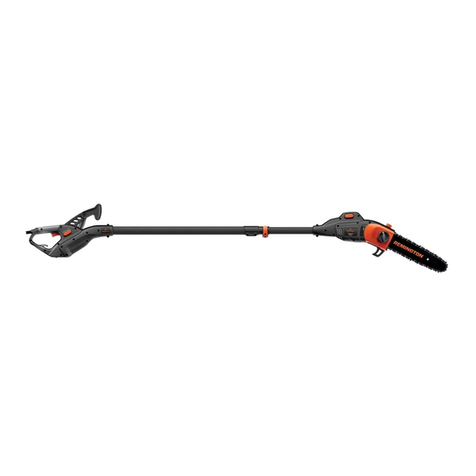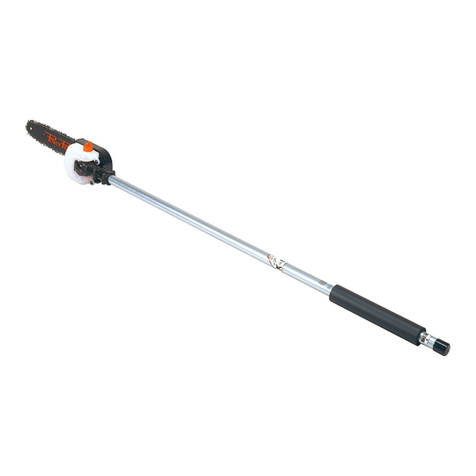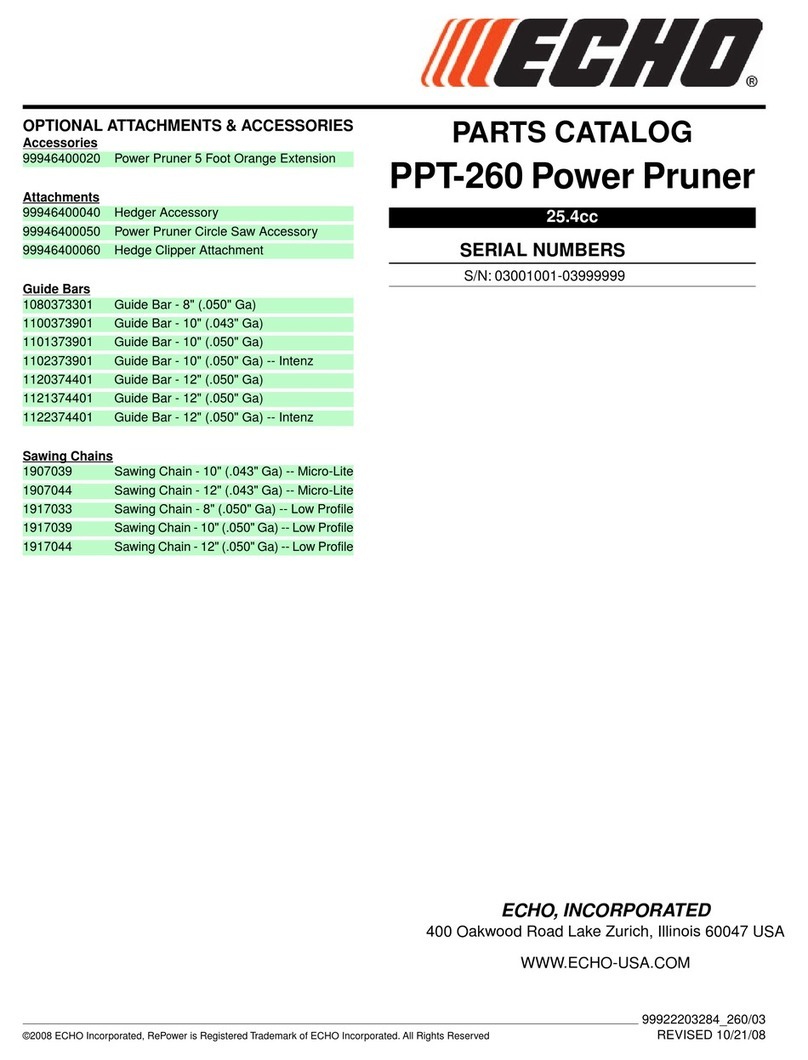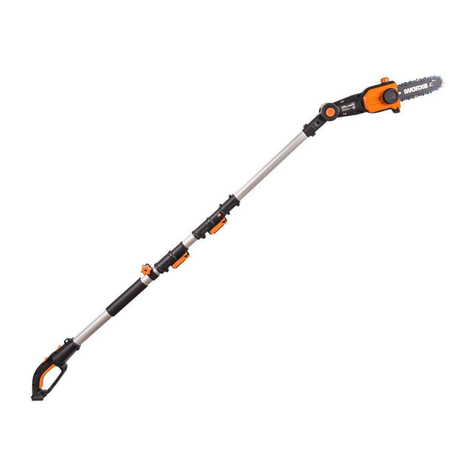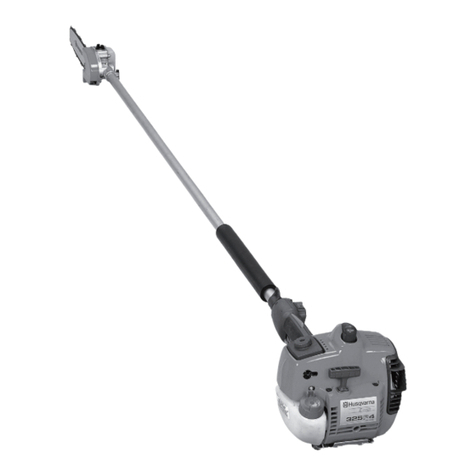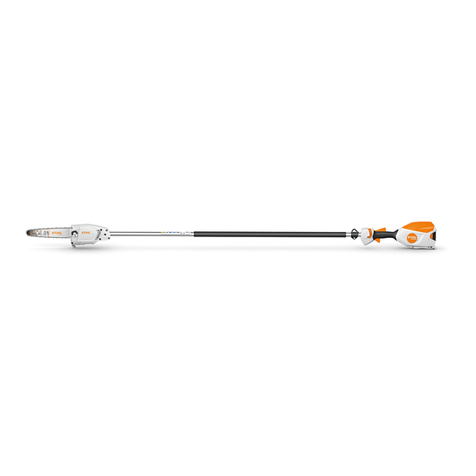
3
•When battery pack is not in use, keep it away
from other metal objects, like paper clips, coins,
keys, nails, screws or other small metal objects,
that can make a connection from one terminal
to another. Shorting the battery terminals together
may cause burns or a re.
•Under abusive conditions, liquid may be ejected
from the battery; avoid contact. If contact acciden-
tally occurs, ush with water. If liquid contacts
eyes, additionally seek medical help. Liquid
ejected from the battery may cause irritation or burns.
•Do not use a battery pack or tool that is dam-
aged or modied. Damaged or modied batteries
may exhibit unpredictable behavior resulting in re,
explosion or risk of injury.
•Do not expose a battery pack or tool to re or
excessive temperature. Exposure to re or tem-
perature above 265°F (130°C) may cause explosion.
•Follow all charging instructions and do not charge
the battery pack or tool outside the temperature
range specied in the instructions. Charging
improperly or at temperatures outside the specied
range may damage the battery and increase the risk
of re.
SERVICE
• Have your power tool serviced by a qualied
repair person using only identical replacement
parts. This will ensure that the safety of the power
tool is maintained.
• Never service damaged battery packs. Service
of battery packs should only be performed by the
manufacturer or authorized service providers.
SPECIFIC SAFETY RULES
FOR POLE SAW
•Before use, read this manual, and all manuals and
labels of this tool and its power head. Failure to
follow the warnings and instructions may result
in serious injury. Use tool only as described in
this manual. Use only attachments recommended
by MILWAUKEE.
•Always wear eye, hearing, and head protection,
and protective clothing and footwear, according
to the operation being performed. Wear heavy,
long pants, long sleeves, boots, and gloves.
Contain long hair. Do not wear loose clothing or
jewelry. Do not wear short pants, sandals, or go
barefoot.
• Keep bystanders at least 50' away during use.
•This tool is for use in trimming and pruning wood
only. Do not use for felling trees or branches over
9" diameter, or cutting other materials such as
metal or plastic. Do not cut vines and/or small
underbrush.
•
Do not operate near electric power
lines. The unit has not been de-
signed to provide protection from electric shock
in the event of contact with electric power lines.
Consult local regulations for safe distances from
electric power lines and ensure that the operating
position is safe and secure before use.
•Do not extend tool by more than one attachment
extension. Additional attachment extensions will
make the pole unstable and dicult to control, which
could result in injury.
•When using this attachment with larger-capacity
battery packs, use the shoulder strap to reduce
user fatigue and help in maintaining control of
the tool during use.
•Do not operate the tool without the front handle in
place. The front handle must be attached properly
during use. Use both hands when operating the
tool, according to the attachment instructions.
Maintain a rm grip. Using one hand could cause
loss of control and result in serious injury.
•Do not operate a pole saw in a tree, on a ladder,
from a rooftop, or any unstable support. Operation
of a pole saw in this manner could result in serious
personal injury.
•Identify a clear retreat path before beginning a cut.
Falling limbs and branches will cause injury.
•Keep face, hands and feet clear of moving parts at
all times. Moving parts can cause severe lacerations.
•Before you start the tool, make sure the saw chain
is not contacting anything. A moment of inattention
while operating saws may cause entanglement of your
clothing or body with the saw chain.
•Hold the tool by insulated gripping surfaces only,
because the saw chain may contact hidden wir-
ing. Saw chains contacting a "live" wire may make
exposed metal parts of the saw "live" and could give
the operator an electric shock.
•Before starting the tool check the work area for
hidden objects, such as wire fencing, posts, etc.
Striking a solid object could cause loss of control and
serious personal injury.
•Brace for unexpected movement when contact
is made with a hard object. Loss of control could
result in serious injury.
•Do not stand directly under branch/limb being
cut. Falling debris will cause injury. Do not use
tool at an angle greater than 60° to ground level.
•Always keep proper footing and operate the pole
saw only when standing on xed, secure and level
surface. Slippery or unstable surfaces may cause a
loss of balance or control of the tool.
•Do not overreach. This helps prevent unintended
tip contact and enables better control of the tool in
unexpected situations.
Causes and operator prevention of kickback:
Kickback may occur when the nose or tip of the guide
bar touches an object, or when the wood closes in and
pinches the saw chain in the cut.
Tip contact in some cases may cause a sudden reverse
reaction, kicking the guide bar up and back towards
the operator.
Pinching the saw chain along the top of the guide
bar may push the guide bar rapidly back towards the
operator.
Either of these reactions may cause you to lose con-
trol of the tool which could result in serious personal
injury. Do not rely exclusively upon the safety devices
built into your tool. As a pole saw user, you should
take several steps to keep your cutting jobs free from
accident or injury.
Kickback is the result of tool misuse and/or incorrect
operating procedures or conditions and can be avoided
by taking proper precautions as given below:
•Maintain a rm grip, with thumbs and ngers en-
circling the tool handles, with both hands on the
tool and position your body and arm to allow you
to resist kickback forces. Kickback forces can be
controlled by the operator, if proper precautions are
taken. Do not let go of the tool.
•Only use replacement guide bars and saw chains
specied by the manufacturer. Incorrect replace-
ment guide bars and saw chains may cause chain
breakage and/or kickback.
